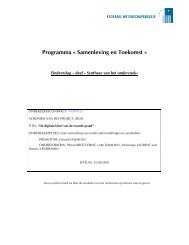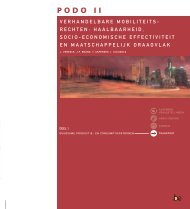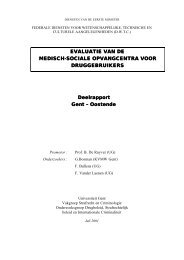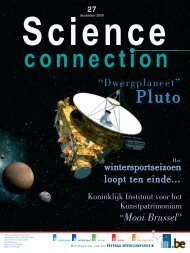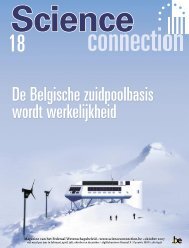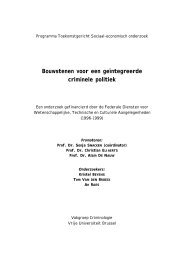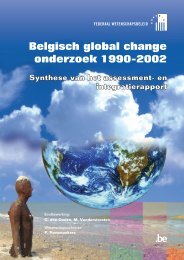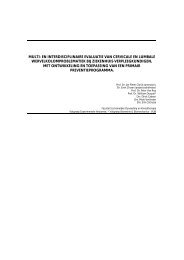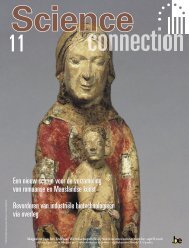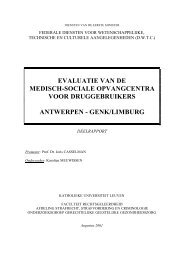chapter 3 inventory of local food systems
chapter 3 inventory of local food systems
chapter 3 inventory of local food systems
Create successful ePaper yourself
Turn your PDF publications into a flip-book with our unique Google optimized e-Paper software.
Project CP/59 - “Instruments and institutions to develop <strong>local</strong> <strong>food</strong> <strong>systems</strong>”<br />
• Storage energy and emission calculations <strong>of</strong> fruit and vegetables are based on<br />
calculation tables from the Flanders Centre <strong>of</strong> Postharvest Technology (FCPT) for the<br />
cool storage in auctions (Verlinden, 2002). Storage energy and emission calculations <strong>of</strong><br />
Gouda cheese are based on energy consumption figures <strong>of</strong> the cooperative association<br />
producing this cheese.<br />
• Processing energy and emission calculations are only calculated for Gouda<br />
cheese and beef. For Gouda cheese these are based on energy consumption figures <strong>of</strong><br />
the cooperative association producing this cheese, for beef these are based on Carlsson-<br />
Kanyama et al. (2000).<br />
Specifically for cheese<br />
• Data from the studied cooperative association producing organic cheese were<br />
very accurate, based on the production <strong>of</strong> 2004, but most <strong>of</strong> these data are in general,<br />
for all the different varieties <strong>of</strong> produced cheese and with one figure for the expenditure<br />
<strong>of</strong> energy for processing, storing and the own shop on location.<br />
• For the mainstream system 90% <strong>of</strong> the total energy and emission bill <strong>of</strong><br />
production and storage <strong>of</strong> the LFS is taken into account, assuming that 10% <strong>of</strong> the<br />
energy in the LFS was used specifically for their own shop. All deli’s selling the cheese<br />
<strong>of</strong> this cooperation are assumed to have the same energy use for their shops as the<br />
cooperation itself.<br />
• Separate energy uses and CO2 emissions for cooling during transport were not<br />
available and are thus not included.<br />
• For storage in the supermarket in the mainstream <strong>food</strong> system, the average <strong>of</strong> the<br />
storage energy uses and carbon dioxide emissions for fruit and vegetables was taken as<br />
the best match to reality, due to a lack <strong>of</strong> more specific data.<br />
Specifically for beef<br />
• No data were available from the abattoirs, not for the one used by the LVS,<br />
neither for the one in the mainstream <strong>food</strong> system studied. Therefore we use figures <strong>of</strong><br />
Carlsson-Kanyama et al. (2000). Separate energy uses and CO2 emissions for cooling<br />
during transport were also not available and are thus not included.<br />
• Assumptions are made for the percentage <strong>of</strong> boned meat obtained from the living<br />
weight <strong>of</strong> a cow (Belgian White-Blue double purpose cows). These are based on<br />
personal communication with the cattle breeders in our case study and on literature<br />
(UNEP, 2000) and set on 46%.<br />
Specifically for apples<br />
• For the <strong>local</strong> <strong>food</strong> <strong>systems</strong> three farmers selling their apples on different farmers’<br />
markets were interviewed. Energy uses and emissions are calculated per farmer and then<br />
the average is taken.<br />
SPSD II - Part I - Sustainable production and consumption patterns - Agro-Food 53



